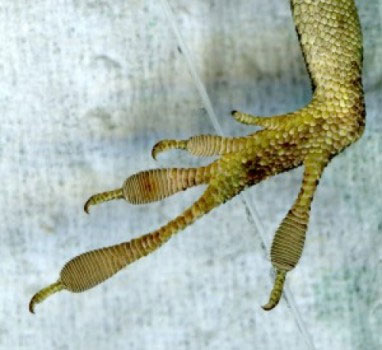The species of Florida lizards evolved rapidly due to invasive species pressure
(Scientists working on islands in Florida have recorded the rapid evolution of a native lizard species - in a short period of only about 15 years - as a result of pressure from an invasive lizard - imported from Cuba.
After interacting with invasive organisms, native lizards began to climb and park in higher branches on the tree, and through generations their legs evolved to become more suitable for Grasp the slippery and smaller branches above higher.
That change took place at an amazing pace: Within a few months, the native lizards had moved to a higher place, and for 15 years and through 20 generations, the toes Theirs are larger, with more sticky scales on their legs.
"We have also predicted to see a change, but their level and speed of rapid transformation are amazing," said Yoel Stuart, a postdoctoral researcher in the Department of Biology. Integrative Biology at the University of Texas at Austin and the lead author of the study. This study is presented on October 24 by Science magazine.

Lizard feet have evolved larger and longer
"In order to see this change in correlation, if the height of human beings increases as fast as these gecko's toes, the average height of an American man can increase from about 5 feet 9. The current inch is 6 feet 4 inches in 20 generations (from 1.7526m to 1,9304m) - that extra height can make the average height of American men with a long-throw defender of the NBA team " Stuart said. (National Basketball Association, or NBA for short, is a men's basketball tournament in North America (mostly in the US). "Although people live longer than lizards, this rate of change is likely. is still an evolutionary fast ".
The indigenous lizards studied by Carolina anole or green anole , are popular in the southeastern United States. Species of invasive lizards are Cuban anole or brown anole species originating from Cuba and Bahamas. The lizards brown anole first appeared in South Florida in the 1950s, possibly through lots of agricultural products from Cuba, and since then they have spread throughout the Southeastern United States and even present on the island of Hawaii.
This latest study is one of the few documented studies of what evolutionary biologists call "character displacement" , in which species are similarly competitive. together about evolutionary differences to take advantage of different ecological drives. A classic example is the finches studied by biologist Charle Darwin.
Two species of finches in the Galápagos Islands have split into two species with different beak phenotypes as they adapt to different food sources. Researchers speculate that the competition between the brown and green lizards of food and living space may be the factor in the new adaptation in green lizards. Stuart also notes that the adults of both species eat the newly hatched offspring of the other species.
"So if you are a newly hatched baby lizard, you will need to climb the tree quickly or get eaten again," Stuart remarked.
The co-author of the study is Todd Campbell at the University of Tampa, Paul Hohenlohe at the University of Idaho; Robert Reynold of the University of Massachusetts, Boston; Liam Revell at Massachusetts University, Boston; and Jonathan Losos at Harvard University.
- Burmese pythons threaten to 'swallow' Florida
- Dangerous invasive alien animals and plants in Vietnam
- Detecting lizards 'penguin limbs amputated'
- Discover new lizards in Kon Tum
- 8 most dangerous invasive fish species in the world
- Turn invasive creatures into specialties
- Detecting lizard-legged lizards
- Chimpanzees evolved stronger than humans
- Observe the extremely rare 'reverse evolution' lizard species in the natural world for the first time
- 3 most dangerous invasive birds in the world
- Crocodile eating Nile people appear in America
- Fish evolved super fast into two species in the same lake
 Animal 'suffering' after hibernation
Animal 'suffering' after hibernation Why do goats climb well?
Why do goats climb well? Scientists were surprised to see chimpanzees eating turtles
Scientists were surprised to see chimpanzees eating turtles Giant catfish died deadly due to drought in Thailand
Giant catfish died deadly due to drought in Thailand